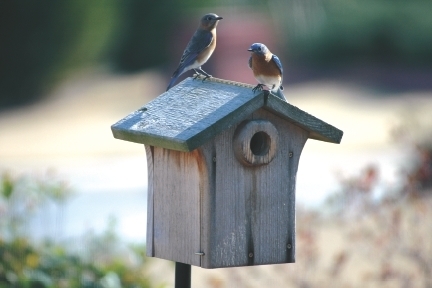Using Your Hobby For Good
Check out these great citizen science projects that you can join to put your hobby to good use. All of the listed projects help provide data that is used to better understand bird populations and their habits, as well as directly support conservation efforts.

eBird (year-round)
eBird is a platform run by the Cornell Lab of Ornithology, which allows users to create and submit checklists of the birds they see wherever they go. These checklists are used by scientists to support research and conservation projects a lot and can provide a vast amount of data on a variety of factors, including population sizes, migration patterns, and more. The platform is super easy to use, simply download the eBird app to your smartphone or tablet and start creating your first checklist. You can create and submit as many checklists as you want any time, anywhere.
Merlin
The sister app to ebird, Merlin, is a virtual field guide in your pocket. You can download the app on your phone or tablet and easily look up all different birds in regions all across the world. The best part is you can search based off of sight or sound. A short questionaire will help you narrow down your search based off of physical descriptions or you can even record your surroundings and it will ID any songs you hear.
Project Feederwatch (November-April)
Project Feederwatch is run by the Cornell Lab of Ornithology and Birds Canada. Data from this project helps provide insight about wintering bird populations across North America. Participating is easy, simply sign up on www.feederwatch.org and count your birds when it works for you. You can then submit your checklists online or through their app, similar to ebird. For this event there is a registration fee, which goes toward funding the continuation of the project each year.
Great Backyard Bird Count (Four Day weekend in February)
Great Backyard Bird Count is a worldwide event run by the Cornell Lab of Ornithology, Birds Canada, and the Audubon Society. The data submitted provides a snapshot of wintering bird populations before migration. Participation is free, all you have to do is pick one of your favorite birding spots and count as many birds as you can see. Then submit your checklists through the ebird app or website. You can join this count on their website www.birdcount.org
Christmas Bird Count usually held at the end of December
The Audubon society began this count in the early 1900's as a way of encouraging people to conserve and count the birds instead of hunting them. It's a countrywide event and is free to join. Participants sign up to join a count near them that takes place within a designated 15 mile circle. Then simply record as many birds as you can and submit the checklist. You can join the count at https://act.audubon.org/a/community-science-signup
Nestwatch
Run by the Cornell Lab of Ornithology, this program tasks participants with monitoring nests in order to provide data on the reproductive habits of nesting birds. The project is free to join, participants can sign up at www.nestwatch.org where they take an online quiz to become a certified nestwatch data collector. Then begin locating nests and collecting data, which can be submitted through the nestwatch app or online. Watching birds raise their young can be a very rewarding experience for those that join the project.
Bird-A-Thon Usually held sometime in June
The Delaware Ornithological Society started this event as a way to raise funds that are used to buy land that serves as important habitat for birds and other wildlife. Participants sign up at www.dosbirds.org/conservation/bird-a-thon/, then find sponsors to support them while they count as many birds as possible in a 24-hour period. The event is a lot of fun and has had great success in raising money and preserving key habitat for the birds.

